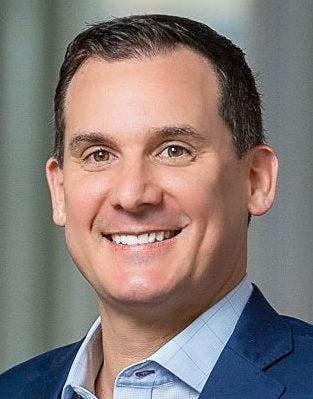Copper Price Hikes, Shutoffs Rock Telecom Customers, Partners
"Can you imagine a T1 increasing from $250 to $2,500? That is what we are dealing with right now," an aggregator leader said.

Customers and their partners are seeing a steady stream of price hikes and service decommissions as incumbent local exchange carriers (ILECs) make a “backward retreat” from copper-based POTS and TDM.
Technology advisors say they’ve seen plain old telephone service (POTS) and time division multiplexing (TDM) rates increase drastically on existing customer contracts. In one case, the ILEC increased all business flat-rate lines to more than $1,000 per month for a POTS customer.

Transit Broker’s Evan Gillman
“We have been seeing exorbitant rate hikes (especially from the LECs) which are essentially creating unreasonable price increases for organizations,” said Evan Gillman, principal at Transit Broker. “The hikes are borderline extortion and often times have been so high, customers are absolutely forced to migrate without any level of negotiation.”

Nitel’s Ryan Rostvold
Ryan Rostvold, vice president of product at Nitel, reports ILEC customers seeing rate hikes of 300-500% percent on TDM services. And POTS has seen similar numbers, he said. However, he noted that the alternative to price increases has been shutoffs.
“We have experienced both carriers saying the service is ending and providing relatively short notice for clients when the service is ending on POTS and TDM services, as well as rate hikes,” Rostvold told Channel Futures.
Barry Bazen, founder and president of Profit Advisory Group, said rate hikes and service discontinuation are “becoming very commonplace across carriers.”

Profit Advisory Group’s Barry Bazen
“Customers are getting POTS notifications regularly that say, ‘Hey, we’re shutting down copper service in your rate center. You’ve got 90 days to move the service or lose the number,'” Bazen told Channel Futures.
Regulatory Changes
Brian Washburn, Omdia’s research director, service provider enterprise and wholesale, said the price hikes reflect the Federal Communications Commission allowing carriers to embrace market-based pricing for copper services. The FCC in August 2019 granted ILECs forbearance from obligations that had restricted their copper policies dating back to 1996. Specifically, the agency had required carriers to offer non-carrier customers the same wholesale rates it offered to carrier customers for the same services. The forbearance memorandum ended that policy, stating that the price caps were holding the carriers back from developing new and better services.

Omdia’s Brian Washburn
“We find that it is no longer necessary to require price cap LECs to bear these once-upon-a-time market-opening obligations that today amount to disparate regulatory burdens that frustrate the transition to advanced communication services offered over next-generation networks,” the Commission wrote almost four years ago.
The Commission also set a deadline of August 2022, by which carriers needed to move their UNE Analog Loops to an alternative service. Many media outlets incorrectly reported that this date meant an instantaneous decommissioning of all POTS lines. In reality, the transition order only applied to a tiny subset of POTS lines.

Spectrotel’s Ross Artale
However, the forbearance around UNE allowed ILECs to get rid of resale discounts and stop running UNE-L, Spectrotel CEO Ross Artale said.
“Any resale platform or UNE DSO loops were subjected to massive rate increases. We are now dealing with colo discontinuance from CLECs, and that is driving unprecedented rate increases and consequently forcing digital transformation,” Artale told Channel Futures.
Artale said transformation benefits everyone, provided it comes with advance notice. But colo discontinuation has put pressure on …
… the supply chain to “migrate tens of thousands of impacted services with only 60 days’ notice.” Otherwise, rates go up as high as a factor of 10.
“Can you imagine a T1 increasing from $250 to $2,500? That is what we are dealing with right now,” Artale said.
The Cost of Copper
Washburn said forbearance around pricing has allowed carriers to charge what POTS services actually cost them.
“[In the] old telco model there were maybe 1,000 telephone customers on five miles of copper plant. Now you’ve got maybe 80 customers on that same five miles of copper plant, but it still needs to be maintained; it still needs to be repaired. You still need the central office tech. You still need your line techs,” Washburn told Channel Futures.
Washburn said carriers don’t have much ability to cut their costs on copper as a result.
“They are kind of over a barrel. Is this the right response [to raise prices]? Well, it’s the response that the FCC has allowed, I guess,” he said. “Is it worse if the telephone company said, ‘We’re just going to turn off your service?'”
So with these trends of copper price hikes and discontinuances in mind, what are businesses to do? And how can partners help them?
Go for the Upgrade?
Rostvold said that when it comes to TDM services, Nitel seeks to migrate the clients to fiber or coax if possible. He also added that SD-WAN adoption has helped facilitate the ongoing transition from copper.
“For most clients that transition has been going on for a long time, independent of FCC UNE Loop and forbearance requirements. Customers are looking for more bandwidth than they can possibly get on TDM services, and they’re looking for better reliability. So combining multiple services and using SD-WAN has long been the much better approach,” Rostvold said.
Washburn said he hopes and assumes ILECs have made the marketing and sales efforts to inform customers of the alternative services they could use. Specifically, he said they might be recommending clients to switch over to fixed 5G wireless access. Other ILECs may present a fiber business internet offering.
“They don’t want to upset their customer that might be spending money on lots of different areas by suddenly zapping them with $500 a month on a POTS line,” Washburn said. “They want to get their customers onto other services as well and have their customers be happy with them.”
POTS-in-a-Box?
Numerous partners have turned to POTS replacement solutions, which the vendor community has offered in droves.

Mejeticks’ Robert DeVita
For Robert Devita and his team at Mejeticks, the solution has been to move lines over to hosted voice providers “where possible.”
“We are currently working with our customers’ engineering teams to evaluate other POTS alternatives,” he added.
Gillman said POTS-in-a-box, a solution that typically leverages dual SIM cards to ensure failover, has proven effective for partners. He added, however, that customers need to take into consideration factors such as signal strength. Rostvold noted that some POTS replacement solutions use a terrestrial-based function while others use wireless. He said he finds that clients do best when they bring both terrestrial and mobility solutions together. But the location of the line factors heavily into the equation.
“One of the things that we find is that for most clients, when they’re trying to replace alarm lines, elevator lines or things of that sort, these are not ideally located for mobility and LTE service. So terrestrial lines and running additional cabling to those locations is sometimes the best option,” he said.
Bazen said some customers have resisted using a …
… solution with a cellular SIM card.
“They say, ‘Hey man, it’s for our alarm system. We need something that is – if not hardwired – at least is over the internet. Not just on the cell network.’ Most of them have a SIM card or the dual SIM. You’re over IP, but you have multiple backups built in,” he said.
Rostvold said the market is receiving POTS replacement solutions with strong demand. However, he said POTS replacement needs to fit within the larger picture.
“However, I don’t know that it’s the long-term play for the industry. Most requirements for POTS are being shifted away toward broadband and other IP-based applications,” he said. “In 15 years, I hope we’re not still talking about trying to emulate POTS services whose source was from the early ’80s.”
Aggregator Alternative?

MOReCOMMs’ Jay Morris
Jay Morris, president of advisory firm MOReCOMM Solutions, said customers can stay on POTS lines if they want to.
“What I don’t like is people telling customers, ‘You’re going to pay $1,000, and there’s no other choice but for you to get off POTS. That’s not the case.”
For example, Morris recently sourced a fax line with a CLEC for a customer that preferred not to go with POTS-in-a-box. Although the price came close to $60, it paled in contrast to numbers like $500 or $1,000.
Morris noted that aggregators’ wholesale agreements with ILECs allow them to deliver POTS lines in a more cost-effective manner. And Artale said that although aggregators “are not impervious to rate increases,” he said they can offer better predictability and reasonableness.
“We all know that eventually we’re all going to have to get off POTS,” Morris told Channel Futures. “The old copper network is going to have a sunset at some point. But the fact remains today, if they’re not quite ready to move to a POTS replacement product, there are still a dozen or more very viable CLECs around the country that are not tied to the retail rates and can offer customers very significant discounts to the point of a fraction of what the ILEC is charging.”
But Bazen pointed out a drawback of going with an aggregator. The aggregator’s network diversity gives it more options to pull from when it comes to copper. However, the disparate nature of the network sources means aggregators frequently face copper shutoffs.
“Because it’s aggregated, you’re going to have a better cross-section and sample size. You’re going to have a little flavor from a lot of different providers,” Bazen said. “But you’re going to be more likely to see some of those lines getting hit. And that’s exactly what we’re seeing.”
Trying It Out
One of Bazen’s clients chose to take the available solutions to the laboratory. They tested out different solutions to see which performed best.
Social factors might ultimately play into the decision, such as if the partner has a better relationship with an Epik reseller than with Epik’s parent company, Granite. That could ensure the partner that the supplier will give the best possible customer support.
But when it comes to the actual technology, there’s no replacement for testing things out.
“Either [you] or your client needs to do exactly what we did — bring in three or four solutions. Evaluate and figure it out,” Bazen said.
Want to contact the author directly about this story? Have ideas for a follow-up article? Email James Anderson or connect with him on LinkedIn. |
About the Author(s)
You May Also Like


